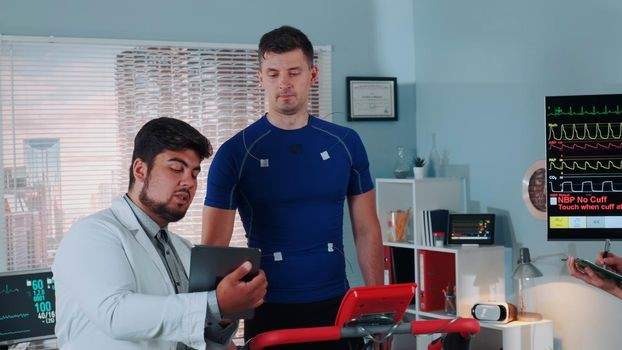Exercise Treadmill Stress Testing
Exercise treadmill stress testing offers a real-time assessment of the heart's response to physical exertion. This non-invasive procedure serves as a valuable tool for healthcare professionals in evaluating cardiovascular health, diagnosing conditions, and determining an individual's exercise capacity.
The fundamental principle of exercise treadmill stress testing involves monitoring the heart's activity while the patient walks or runs on a treadmill. As the intensity of exercise increases, the heart must work harder to meet the body's demand for oxygen and nutrients. This stress on the cardiovascular system allows healthcare professionals to observe how the heart responds under conditions that mimic physical exertion.
During the test, the patient is connected to an electrocardiogram (ECG) to continuously record the heart's electrical activity. Blood pressure is also monitored throughout the test, providing additional insights into cardiovascular function.

The test is typically conducted in stages, with the treadmill incline and speed increasing incrementally. Patients are encouraged to communicate any symptoms such as chest pain, shortness of breath, or fatigue.
Exercise treadmill stress testing serves several key purposes. It is often employed to assess cardiovascular fitness, providing an objective measure of an individual's ability to tolerate physical activity. This information is valuable in determining an appropriate exercise prescription for patients, whether they are recovering from a cardiac event or managing chronic conditions such as heart failure. Additionally, exercise treadmill stress testing is a crucial diagnostic tool for identifying coronary artery disease (CAD). Reduced blood flow to the heart muscle during exercise may result from blockages in the coronary arteries. By observing changes in the ECG and monitoring for symptoms during the test, healthcare professionals can identify potential issues and formulate targeted treatment plans.
The versatility of exercise treadmill stress testing extends to risk stratification for individuals with known cardiovascular conditions and the evaluation of the efficacy of prescribed medications or interventions. Regular testing can also track changes in cardiovascular health over time, aiding in the prevention and management of heart-related issues.
In conclusion, exercise treadmill stress testing stands as an informative method for assessing cardiovascular health and functionality. By simulating the stress of physical exertion, this test provides valuable data for risk assessment, diagnosis, and the formulation of personalized treatment plans, contributing to the overall well-being of individuals and the proactive management of cardiovascular health.




